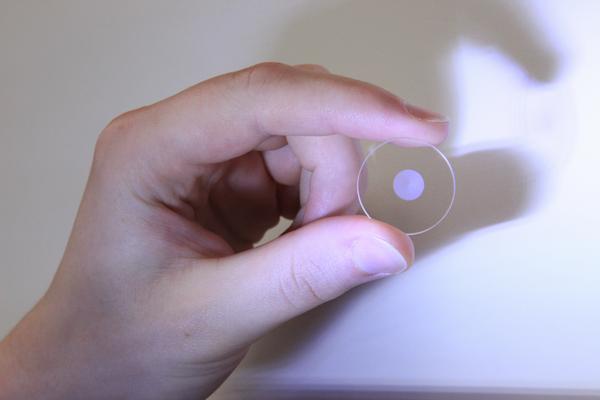New nano-structured glass optical elements could significantly reduce the cost of medical imaging.
In their Applied Physics Letters paper, the team describes how they have used nano-structures to develop new monolithic glass space-variant polarization converters. These millimeter-sized devices generate ‘whirlpools’ of light enabling precise laser material processing, optical manipulation of atom-sized objects, ultra-high resolution imaging and maybe even table-top particle accelerators.
According to the researchers, ultra-short laser pulses
at sufficient intensities
can be used to imprint voxels,
tiny dots, like 3D pixels, in glass. Previous research showed that lasers with fixed polarization produce voxels consisting of a periodic arrangement of ultra-thin (tens of nanometers) planes. By passing polarized light through such a voxel imprinted in silica glass, the researchers observed that it travels differently depending on the polarization orientation of the light. This ‘form birefringence’ phenomenon is the basis of their new polarization converter.
The advantage of this approach over existing methods for microscopy is that it is 20 times cheaper and it is compact, they say.

New monolithic glass space-variant polarization converter. Credit: University of Southampton
"Before this we had to use a spatial light modulator based on liquid crystal which cost about £20,000," said Professor Peter Kazansky of the University of Southampton's Optoelectronics Research Centre. "Instead we have just put a tiny device into the optical beam and we get the same result."
Since publication of the paper, the researchers have developed this technology further and adapted it for a five dimensional optical recording.
"We have improved the quality and fabrication time and we have developed this five dimensional memory which means that data can be stored on the glass and last forever," said Martynas Beresna, lead researcher for the project. "No one has ever done this before."
The researchers are working with the Lithuanian company Altechna to introduce this technology to the market.
Citation: Martynas Beresna, Mindaugas Gecevičius, Peter G. Kazansky and Titas Gertus,'Radially polarized optical vortex converter created by femtosecond laser nanostructuring of glass', Appl. Phys. Lett. 98, 201101 (2011); doi:10.1063/1.3590716


